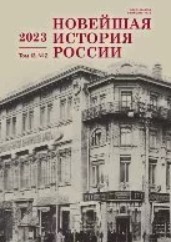Российский подоходный налог на фоне социально-политических событий 1917–1920-х гг.
The Russian Income Tax Against the Background of the Socio-political Events of 1917–1920s
Author(s): Olga Mihajlovna Morozova, Tatjana Igorevna TroshinaSubject(s): History of Law, Economic history, Military history, Political history, Economic policy, Pre-WW I & WW I (1900 -1919), Interwar Period (1920 - 1939), Law on Economics, Fiscal Politics / Budgeting
Published by: Издательство Исторического факультета СПбГУ
Keywords: income tax; tax legislation; People’s Commissariat of Finance; revolution; 1917; Russia; Civil War; New Economic Policy;
Summary/Abstract: The introduction of income tax in Russia has a long history, but not all stages of this process have been covered in scholarly publications. Due to the low efficiency of the tax institutions of the post-revolutionary governments, their law-making activities and attempts to collect income tax in 1917–1921 remain under-researched. What little the Soviet and White governments had in common was their willingness to base their fiscal practices on the imperial legislation. The practice of application revealed differences. The Bolsheviks consistently developed the existing framework, trying to find forms of tax collection appropriate to the country’s situation despite a long phase of failure in their attempts. Not only the central authorities, but also the county councils and congresses were given greater freedom in rulemaking. In contrast to this experience, the opponents of the Soviet power, didn’t work out the contours of the emergency financial system. The decrees and orders of the White governments were only created to respond to inflationary processes. The construction of the peacetime tax system continued under the extraordinary conditions of economic crisis and famine. The Soviet government and the People’s Commissariat of Finance did not abandon the idea of the income tax, considering its presence a sign of maturity of the tax system and the guarantee of stability of revenue receipts in the budget. At the stage of the class struggle in the economic sphere in the 1920s, it was used as a tool to restrain the growth of bourgeois elements in trade and production. The introduction of this type of tax in the agricultural collective sector lasted for decades. Sporadic attempts to use it in the 1920s were unsuccessful. It was not until 1992 that it took the form of a personal income tax.
Journal: Новейшая история России
- Issue Year: 13/2023
- Issue No: 43
- Page Range: 322-338
- Page Count: 17
- Language: Russian

